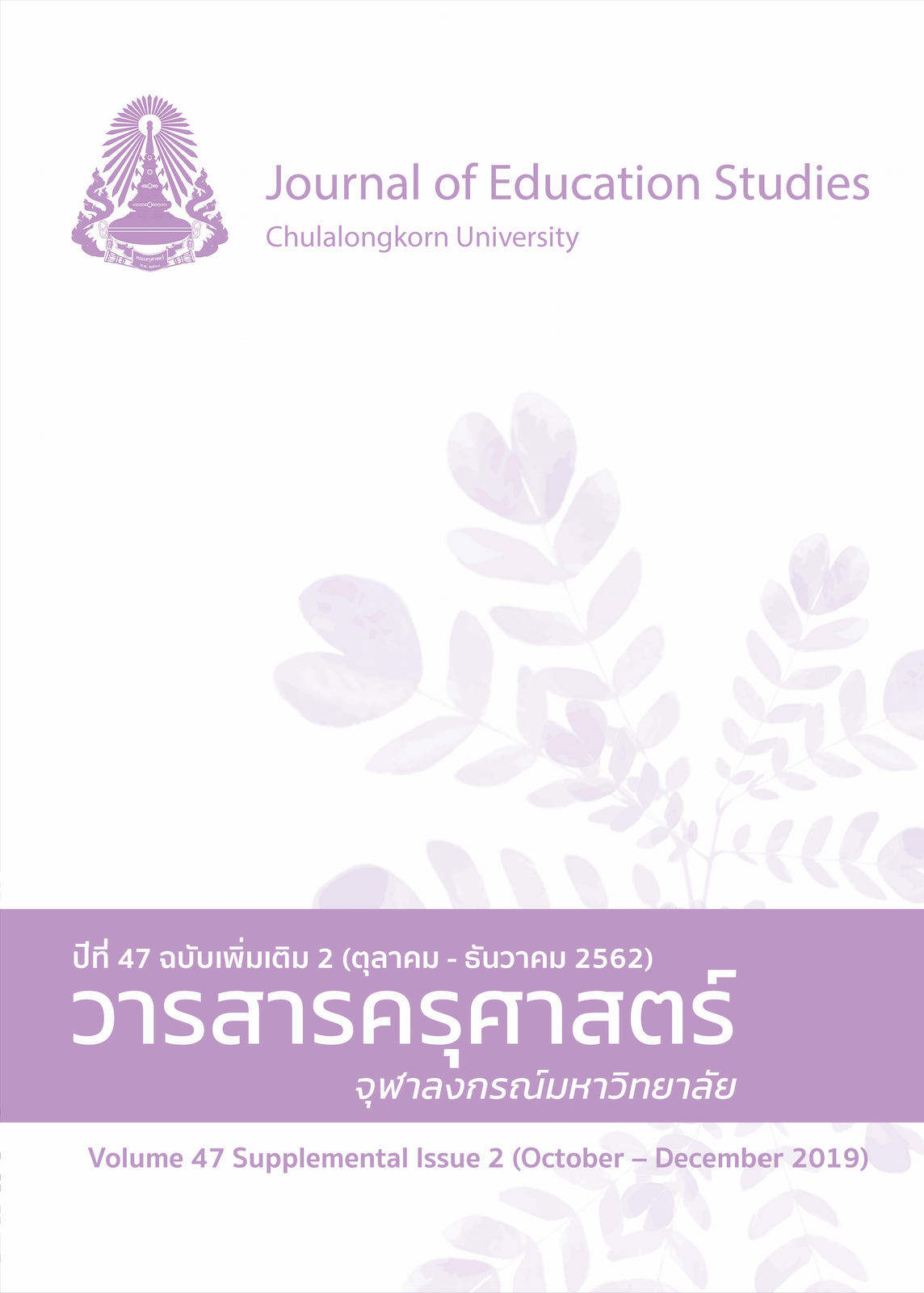Proposed Model of a Ceramics Instruction for Undergraduate Level Adapt to Context of Ceramics Studio
Keywords:
PROPOSED MODEL, CERAMICS SUBJECT, CERAMICS STUDIOAbstract
The purposes of this study were, firstly, to survey the status of teaching and using the ceramic studio in three undergraduate curriculums including an 1) art teacher program, 2) an art program, and 3) an industrial design Program, and secondly, to develop a model for ceramics instruction in a ceramics classroom studio, which is based on studio limitations.
The methodology used in this study included methods of qualitative research and quantitative research which collected data through: 1) a combined questionnaire which was utilized by gathering data from teachers and students in an undergraduate ceramics classroom in Thailand, 2) expert interviews which included three ceramics teachers from each program and also ceramics experts, and 3) using a ceramics classroom for studio observation.
The obtained data were analyzed quantitatively through use of means, standard deviation, and percentages. Teaching interviews and observation data were analyzed by use of typology and taxonomy, constant compassion and analytic induction.
It was found that the proposed model of ceramics instruction for undergraduates was adapted to the context of the ceramics studio: 1) The art teacher program consisted of lectures on an overview of the process and the value of ceramics with demonstration techniques and measurements consisted of evaluation of understanding in the ceramics process and developing students’ teaching skills. 2) The art program consisted of the process to develop students’ aesthetic skills and students’ individual styles. Measurements consisted of evaluation of developmental skills and creativity. 3) The industrial design program consisted of the design principles of industrial contexts concerned with aesthetics, materials, and functions. Measurements consisted of evaluation of the problem solving of the industrial process and marketing.
References
กรมส่งเสริมการส่งออกระหว่างประเทศ. (2557, 13 มิถุนายน). รอบรู้เศรษฐกิจ ตามติดตลาดโลก, ประชาชาติธุรกิจ, สืบค้นจาก. http://www.ditp.go.th/contents_attach/148790/148790.pdf
ทิศนา แขมมณี. (2559). ศาสตร์การสอน องค์ความรู้เพื่อการจัดการเรียนรู้ที่มีประสิทธิภาพ (พิมพ์ครั้งที่ 20). กรุงเทพฯ: สำนักพิมพ์แห่งจุฬาลงกรณ์มหาวิทยาลัย.
นวลจิตต์ เชาวกีรติพงศ์. (2535). การพัฒนารูปแบบการจัดการเรียนการสอนที่เน้นทักษะปฏิบัติ สำหรับครูวิชาอาชีพ. (วิทยานิพนธ์ปริญญาดุษฎีบัณฑิต ไม่ได้ตีพิมพ์). จุฬาลงกรณ์มหาวิทยาลัย, กรุงเทพฯ.
ปุณณรัตน์ พิชญไพบูลย์. (2538). เครื่องเคลือบดินเผา: เทคนิคและวิธีการสร้างสรรค์. กรุงเทพฯ: โรงพิมพ์จุฬาลงกรณ์มหาวิทยาลัย.
ไพโรจน์ ตีรณธนากุล. (2521). การจัดการโรงฝึกงานช่างอุตสาหกรรม. กรุงเทพฯ: ศูนย์สื่อเสริมกรุงเทพ.
สุขุมาล เล็กสวัสดิ์. (2548). เครื่องปั้นดินเผาเบื้องต้นสำหรับนักออกแบบ. กรุงเทพฯ: สำนักพิมพ์แห่งจุฬาลงกรณ์มหาวิทยาลัย.
อุทัยวรรณ สุวคันธกุล. (2532). การจัดและบริหารโรงฝึกงาน. กรุงเทพฯ: ภาควิชาพื้นฐานอุตสาหกรรมศึกษา วิทยาลัยครูพระนคร.
โฮม พอตเตอรี่. (2557). ลักษณะการประกอบธุรกิจ. สืบค้นจากhttp://capital.sec.or.th/webapp/ corp_fin/datafile/69/2015/167200144401012015-0317T1007_Bussiness_Type. PDF?ts=1440846551
ภาษาอังกฤษ
Belluigi, D. Z. (2013). A proposed schema for the conditions of creativity in fine art studio practice. International Journal of Education & the Arts, 14(18/19), 1-22.
Brophy, J. E. (1983). Classroom organization and management. The University of Chicago Press, 83(4), 264-285.
Joyce, B., & Weil, m. (1996). Models of teaching (3rd ed.). Boston, MA: Allyn & Bacon.
Sanborn, K. (2002). College student experience of a studio art class in a liberal arts context. (Doctor Dissertation). Retrieved from https://dspaceprod.lib.uic.edu /handle /10027/11898



